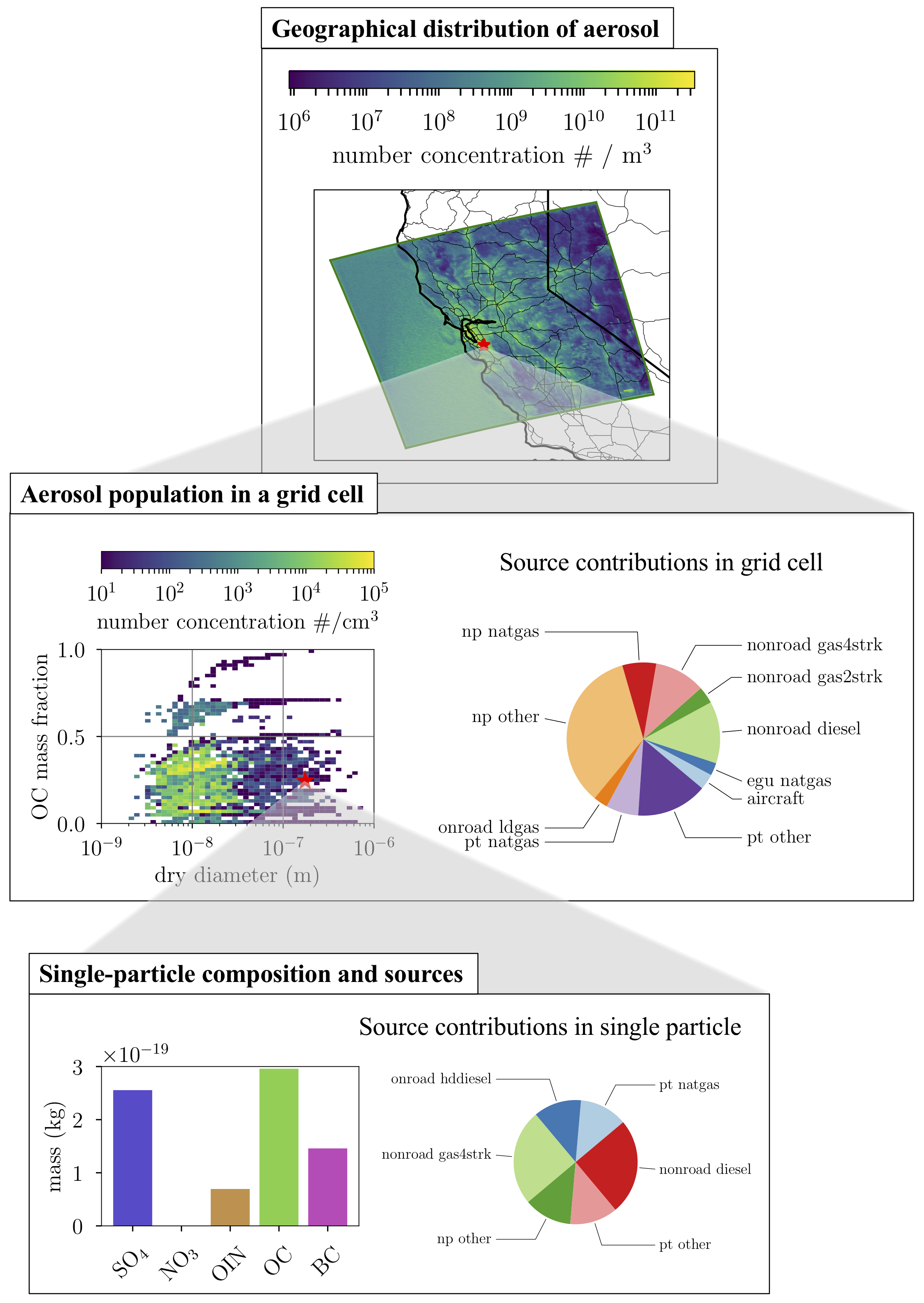Research
The research in my group is focused on the question of how we should represent aerosol particles in models, so that their impacts can be accurately estimated.
Key examples of our work include:
- Quantifying the role of the heterogeneous hydrolysis of N2O5 for tropospheric chemistry.
- Investigating the aging processes of black carbon in the atmosphere.
- Quantifying the error in cloud properties caused by simplified aerosol representations.
The aerosol representation in models is an issue because the macroscopic impacts of aerosol particles on the radiative balance of the Earth, on clouds and on human health are ultimately tied to processes that occur on the per-particle level. Field observations show that individual aerosol particles are a complex mixture of a wide variety of species, such as soluble inorganic salts and acids, insoluble crustal materials, trace metals, and carbonaceous materials. This reflects differences in their sources, but also differences in the chemical and physical transformations that the particles undergo in the atmosphere. This represents a great challenge for current chemical transport models, since the computational resources to resolve this much detail are limited. Simplifications are therefore necessary, however we often do not know the uncertainties that are introduced by such practise.
I am always looking for new graduate students to join my group. Please contact me for questions about potential projects or about the application process at our department. Watch the latest presentations of our group members here.
Particle-resolved aerosol models
The question of how to represent aerosol particles in models has led us to develop a new modeling tool, the stochastic particle-resolved model PartMC-MOSAIC. This aerosol model is designed to resolve the composition of individual aerosol particles. It is based on sampling the aerosol size distribution using a large number of computational particles and allows them to evolve using the appropriate probabilities for coagulation, interleaved with deterministic processes such as condensation of secondary aerosol species. PartMC can be downloaded here. MOSAIC is available upon request from Rahul Zaveri (rahul.zaveri@pnl.gov).
PartMC-MOSAIC has been coupled to the Weather Reseach and Forecast (WRF) model. This enables particle-resolved simulations on the regional scale with fully interactive transport and microphysics. While the PartMC-MOSAIC box model can easily be run on an individual laptop, WRF-PartMC simulations require a petascale resource with tens of thousands of cores, fast interconnections between those cores, and sufficient memory per core. We are currently using allocations on Blue Waters operated by National Center for Supercomputing Applications (NCSA) for these computationally demanding simulations.
We use this model for different purposes:
- As a benchmark and error quantification tool for more approximate models, for example sectional, moment or modal models.
- As a coarse graining tool for deriving parameters for more approximate models
- As a modeling tool to perform detailed studies on the particle scale and for experimental intercomparison.

This figure shows an example of the level of detail that can be obtained by WRF-PartMC for a simulation for California. In such a model run, we are simulating the complex aerosol dynamics and chemistry for about 5 billion individual particles. For any given particle in the simulation, we store its chemical composition and the sources of the constituent particles that it is composed of (particles aggregate because they coagulate with each other during transport). For each grid cell in the model domain, we can then construct the full mixing state of the aerosol population, as well as the full source apportionment profile. (full resolution image)